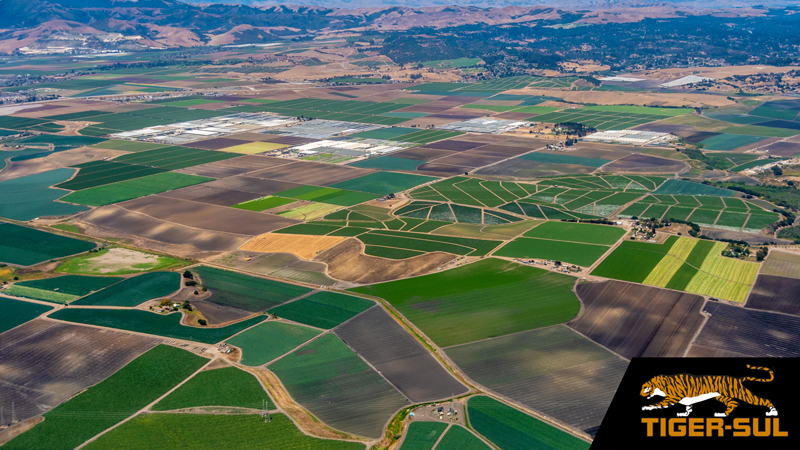Top 10 Themes from the 2017 4R Nutrient Stewardship Summit
Preserving water quality while feeding another 2 billion people by 2050 is the challenge facing North America’s farmers and its agricultural supply chain. The annual 4R Summit, sponsored by The Fertilizer Institute, was held in Minneapolis June 12 and 13 to share effective nutrient stewardship tenets and practices. Farmers, scientists, manufacturers, field agronomists, state and federal government specialists, food companies, and non-profit organizations were among the 238 attendees at the third annual 4R summit, according to NutrientStewardship.com. Also present were conservation organizations, such as The Nature Conservancy, the Conservation Technology Information Center, and the National Association of Conservation Districts, collaborating to make farming more efficient, sustainable and profitable.
This multi-stakeholder effort champions stewardship and sustainability using “4R” best management practices: applying the right fertilizer source at the right rate at the right time and in the right place. These science-based practices deploy the right types of fertilizers more efficiently, at precisely the most effective rate, time, and place. With more than 40 speakers during the two-day event, a lot was said on the 4Rs. Here are our top 10 themes from the 4R Summit:
1. COLLABORATION IS KEY. No company or organization can solve nutrient management challenges alone. It will require the effort of farmers working with retailers and crop advisors, universities, nutrient suppliers, equipment manufacturers, technology providers, water quality experts and environmental organizations.
2. ONE SIZE DOESN’T FIT ALL. Federal or state nutrient management policy not initiated with good science and stakeholder input is not a successful way to reduce nutrient losses. Bringing farmers into the process early increases the probability of hitting nutrient management goals and making sustainable gains.
3. ECONOMIC SUSTAINABILITY. Nutrient management must be not only environmentally sustainable, but also economically sustainable for farmers. Farmers are huge generators of economic activity across much of rural America, and it benefits us all to keep them healthy financially.
4. BUSINESSES ON BOARD. The food supply chain is working together to drive sustainable farming practice adoption. Walmart, General Mills, Coca Cola, Wrangler Jeans and Unilever are just a few brands procuring sustainably produced inputs. They unite the supply chain with sustainable farming practices to provide consumers more information. Farmers can benefit by better understanding how management choices affect overall sustainability and operational efficiency.
5. YOU CAN’T MANAGE WHAT YOU DON’T MEASURE. Data is needed to effectively correlate practices, products and results. Nutrient source, enhanced efficiency product selection, soil tests, yield monitors, tissue and stalk samples, electrical conductivity probes, soil penetrometer readings, and tile-line monitors are just a few tools available to tailor 4R practices with individual soil and crop environments. Organized research, on-farm data and intentional analysis are vital for farmers to see what works on their farms.
6. GROWERS’ APPLICATION IS IMPROVING. A majority of corn farmers surveyed say they are aware of 4R principles, and many follow state nutrient guidelines. As more data on the impacts of the 4Rs becomes available, farmers can achieve continuous improvement, further reducing nutrient loss and improving their bottom line.
7. LONGER TERM RESEARCH NEEDED. Two- or three-year research studies are not enough. There are simply too many variables from year to year to draw accurate conclusions and nutrient recommendations based on short-term studies. When funding nutrient research, we should be thinking in terms of 5-, 10- and 15-year studies.
8. DON’T FORGET MICRONUTRIENTS. Some micronutrients help corn and soybean plants use macro nutrients more efficiently, this means optimizing applications of N, P and K.
9. ALL HANDS ON DECK. Spending authorizations in the Farm Bill, which could be used for additional nutrient management research, don’t turn into appropriations without input from constituents and industry. This is a high-touch process that requires constant hand-holding to make sure authorized funds end up where they are needed most.
10. CLEANER WATER IS POSSIBLE. From giant Chesapeake Bay to small watersheds in Illinois and Iowa, there is definitive evidence that stemming nutrient runoff is advancing clean water. Technology to measure nutrient application, uptake and loss has improved immensely over the past 10 years, and will improve even more over the next 10 years. By measuring inputs against outputs, collecting data and sharing information, the industry is well on its way to establishing best practices for nutrient management on every farm in North America.






